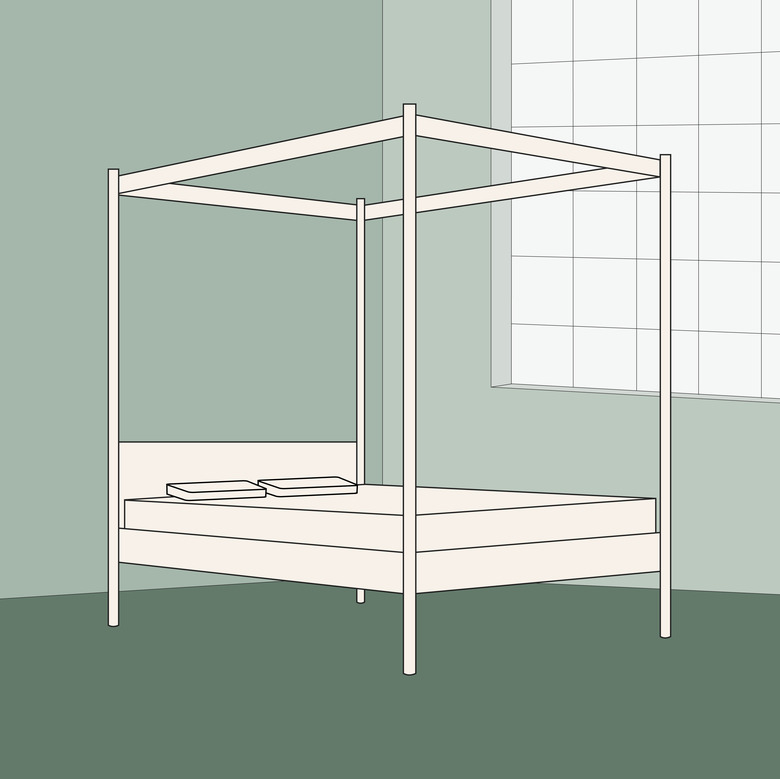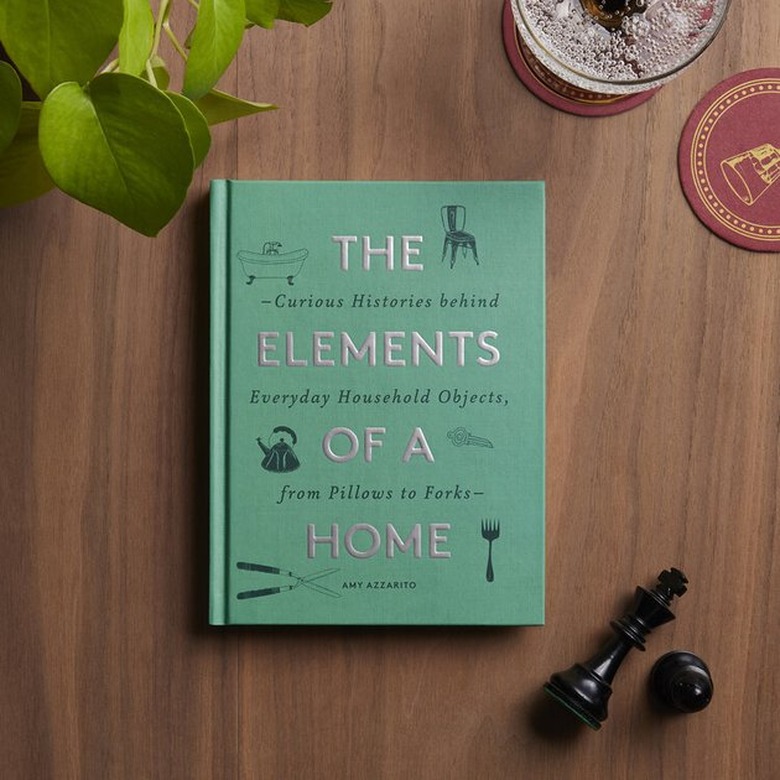The Unexpected Original Use Of The Canopy Bed
We may receive a commission on purchases made from links.
Reprinted from Elements of a Home by Amy Azzarito with permission by Chronicle Books, 2020.
A canopy bed figures high on the wish list of every little girl with fairy-tale princess dreams. It's ranked right up there with a tiara and tulle skirt. Unlike glitter wands and glass slippers, this luxurious bed was a real fixture in the lives of European princesses (and kings and queens).
Crusaders brought the concept of a fabric-encased bed to Europe from the Middle East. The draperies provided much-needed warmth in a chilly castle bedroom. They also bestowed some privacy (visual if not aural) at a time when nobility shared rooms with servants and other sleepers. At first, the curtains of these early canopy beds were suspended from the ceiling by a device that looked like an upside-down bowl. Later, they were hung from rings, which were strung on rods that formed a square around the bed.
Four-poster beds became fashionable in the fifteenth century, and by the sixteenth century, the curtains evolved into an elaborate series of draperies that completely covered the frame.
When closed, they made the bed look like a big box with feather-festooned finials perched on top. The heavy fabric protected the sleeper from drafts, which were thought to cause disease.
Though it may look familiar to our modern eye, the way the canopy beds were used was decidedly not. In those virtually chair-free days, the bed was the only seating in the room. During the day, the yards of sumptuous fabric were pulled and tied up to form large hanging teardrops that allowed visitors to climb in with their host for a chat (and surprisingly, no thoughts of hanky-panky).
In seventeenth-century France, the epicenter for showstopping excess, the most resplendent canopy was created for the Porcelain Trianon. Built for Louis XIV's rendezvous with his royal mistress Madame de Montespan, the retreat was just a thirty-minute walk from the Palace of Versailles. The centerpiece of the Love Bedroom (its real name!) was a giant canopy bed adorned with garlands of tassels, fabric swags, ribbons, and mirrors inset into the headboard. By the end of the seventeenth century, the whims of fashion had shifted again. Four-poster beds were replaced by flying testers — named because canopies appeared to be flying out from the wall to which they were attached. Hanging straight over the bed, the new canopy was similar to a cantilever deck umbrella and was bedecked in point lace and ribbons. This model was such the rage that if you wanted yours made by the Bon brothers, the French bed designers of the moment, you had to wait a full year.
Whether it was a four-poster or a flying tester, canopy beds were valuable. If you were unlucky in cards, you could play another hand by putting your bed hangings up as stakes. In 1693, as a gift for completing a successful medical procedure, Louis XIV presented his surgeon, Monsieur Felix, with several such beds. Those gifts, however, paled in comparison to the one trimmed in velvet and silk embroidery that the king gave to the Swedish ambassador. There were 413 canopy beds in Versailles, so gifting a few here or there wouldn't have made much of a dent in Louis's collection.
Through hundreds of years, canopy beds have remained en vogue in one form or another. In the United States during the 1950s and '60s, they were mostly found in country inns and little girls' bedrooms. In 1984, they rose to an uber-trend after American design legend Mario Buatta used one in a bedroom at the annual Kips Bay Decorator Show House in New York City. Buatta's version was a flat canopy attached to the ceiling, hung with frothy white curtains that were trimmed with yards of bobble fringe.
Architectural Digest called it "the bedroom that shook the world." After his success at Kips Bay, Buatta designed bedrooms for an impressive roster of moguls, socialites, and celebrities, including Billy Joel and Mariah Carey. After creating an over-the-top feminine canopy for a home in New Jersey, the designer called the homeowners to see how they liked it. He managed to get a hold of their maid, who reported, "I take the meals upstairs on a tray and they don't open the door." It turns out the couple got into the bed on Friday night and didn't get out all weekend.
If that's not endorsement enough, consider that on the days you have no energy to make your bed, you can simply snap the curtains shut.
Want more juicy history of household objects? Check out Amy Azzarito's new book, The Elements of a Home, available at bookstores everywhere:

